
PR
When you visit a shrine, the first thing you see on the approach is a pair of Komainu. Since ancient times,Guardian dogs are spiritual animalsIt is said thatAmulet to prevent evil spirits from entering the sacred areahas played a role as.
In ancient times, people borrowed the power of a guardian dog to ward off evil spirits, and when they felt pain in their body, they would place an offering in front of the guardian dog at the shrine they worshiped. Those with back pain would place money on the guardian dog's lower back, and those with leg pain would place an offering in front of the guardian dog. It is said that he stroked it and prayed for the "magic" that was the source of the pain to be sealed and for the pain to go away as soon as possible.
Those two guardian dogs,One is a komainu and the other is a lion.I hear that. The Agata with an open mouth is a lion, and the Ungyo with a horn on its head and a closed mouth is a guardian dog.
So, in order to benefit from the amulet,Guardian dogs of Kitano Tenmangu ShrineI went to see him.Said to be the largest in Kyoto CityThe Komainu in front of the Otorii gate was invented by Seiho Takeuchi, a master of the Japanese art world.just like a lionis. At Tenmangu Shrine, known for its cow statues,horned dogIt is also a place where you can meet many Komainu.
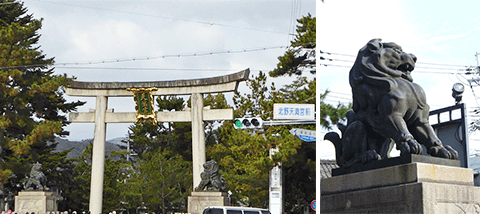
Kitano Tenmangu Shrine Otorii and guardian dogs.
On the right is the "A" lion beside the Otorii, which is said to be the largest in Kyoto City.
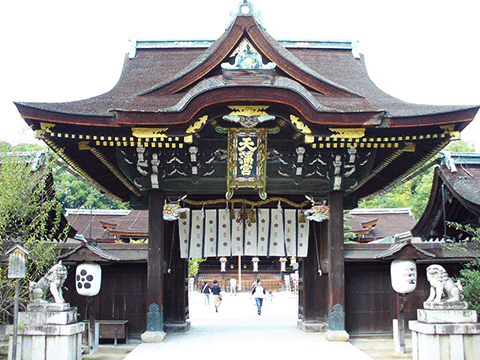
Horned guardian dog and lion at Kitano Tenmangu Shrine
by the way,The roots of guardian dogs are lionsIt is said that there is. In the ancient Orient, lions were feared as fierce beasts that hunted prey in packs and sometimes even attacked humans. On the other hand,A divine beast that exterminates the herbivorous beasts that take away the fertility of cultivation.as and alsoEarth mother goddess who brings fertility and fertilityIt is said that he was even revered as a.
I once heard from someone who keeps lions at the Kyoto City Zoo that lions used to have a wide range of habitats. Large lions were abundant from northern Africa to Egypt, Tunisia, Algeria, and the Mediterranean region of Morocco. However, lions in the area became extinct in the early 20th century. Indian lions also lived in India, Israel, Iran, and Iraq.
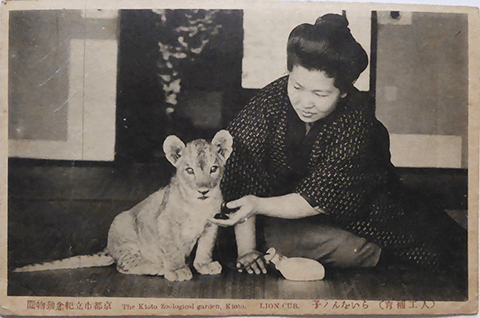
Old picture postcard of Kyoto City Memorial Zoo, the predecessor of Kyoto City Zoo
First in Japan! Successful artificial rearing of lions (from the author's collection)
The ancient Hittites are known for producing iron tools.Lions are believed to be the beast gods that guard the royal castles and gates, and a pair of statues are placed at important gates.was placed. This information and culture about lions eventually spread to Japan via India and China.The traditional performing art of lion dance was created by merging with Japan's unique culture and became lions and guardian dogs.It is said that Also, the appearance of the horned guardian dog is said to be a fusion of a rhinoceros that lives in India and a lion.
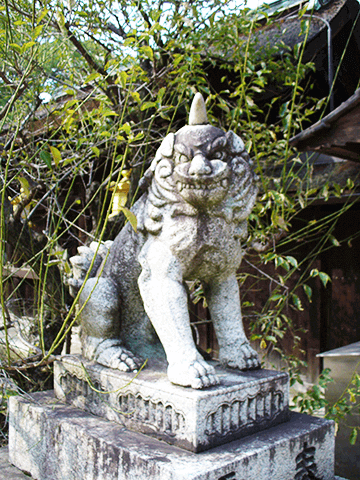
Kitano Tenmangu Shrine guardian dog (with horns)
When you think of the word lion, one of the two guardian dogs, the lion dance, which is one of the lucky charms of the New Year, comes to mind. Although it has become rare to see it in the city recently, Ise Okagura is said to have powerful spiritual power to purify people. However, the adults calmed down the frightened children by giving them bites on the head. Manjushri Bodhisattva, who bestows wisdom, is depicted riding a lion, so this belief is also included.The custom of having a lion dancer bite its headwas probably born. In addition, Okinawa's shisa is a corruption of the Sanskrit word for lion, and is known to protect villages and homes from misfortune.
Now, there are many unique guardian dogs enshrined at shrines in Kyoto, including ones that stand on their heads. Although they are not technically guardian dogs, there are various sacred animals associated with each shrine, such as the cow at Kitano Tenmangu Shrine, the fox at Fushimi Inari Taisha Shrine, the boar at Goo Shrine, the rabbit at Okazaki Shrine, and the mouse at Otoyo Shrine. It's fun to visit the shrines as they are said to have blessings and blessings.
While enjoying the autumn leaves on the grounds,I would like to meet the spiritual beasts that have been worshiped and loved by people since ancient times, touch their spiritual power, and spend the busy days leading up to the end of the year by warding off evil spirits.Thing.
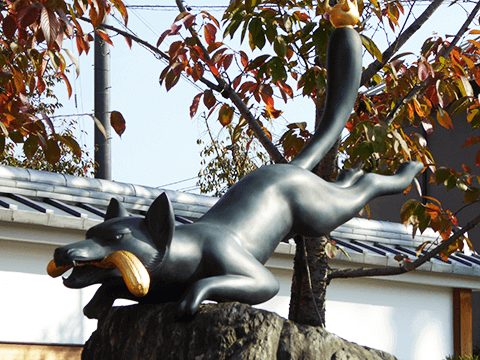
Fushimi-Inari Taisha First torii gatefox in front
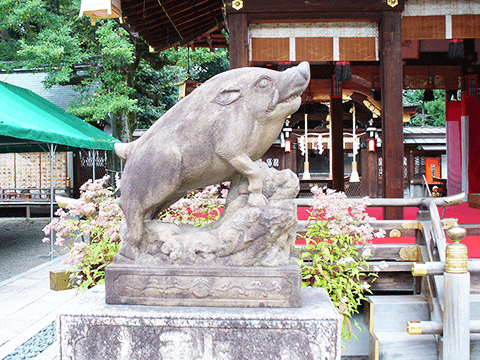
Boar at Goo Shrine
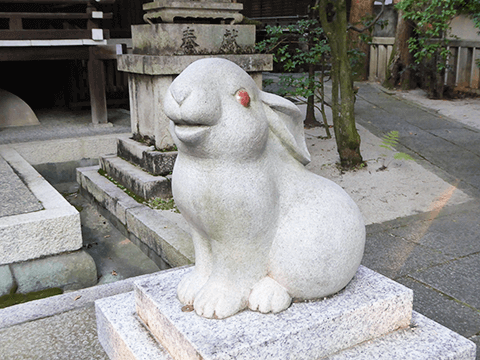
Rabbit at Okazaki Shrine
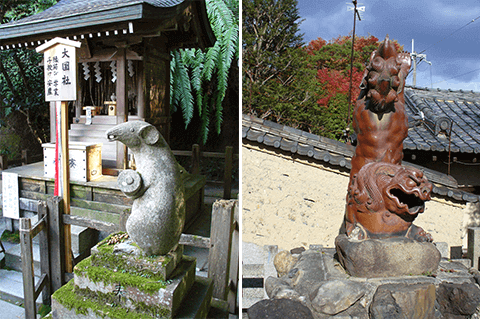
(Left) The mouse “A” of Daikoku Shrine in the precincts of Otoyo Shrine
(Right) Handstand “A” at Munakata Shrine
Tradition that exists everywhere in the city of Kyoto. It is not just a picture, it is secretly alive in this modern age and continues to coexist with people. The two of Office TO, who previously wrote a series of articles "Kyoto's Demon World Exploration" in the monthly magazine Leaf, explore the mysterious "different" world of Kyoto, which was created over 1200 years. I will unravel the story while actually visiting the place. .
 News
News Feature article
Feature article Featured event
Featured event